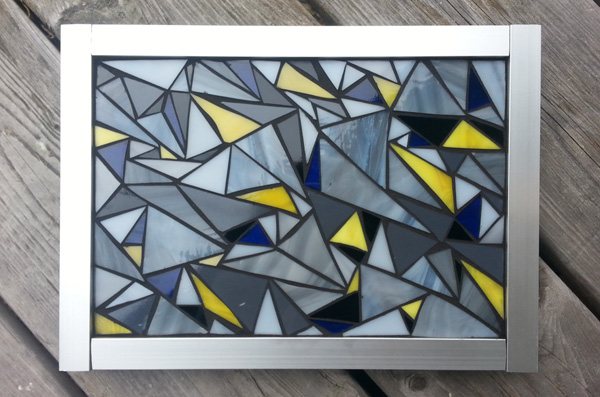Sanded grout is recommended for grout gaps larger than 1/8 inch, but we recommend it for all grout gaps larger than a hairline simply because so many customers report problems when using non-sanded grout.
Problems With Non-sanded Grout
Some of the problems typically encountered with non-sanded grout include shrinking, cracking and crumbling. Customers often report a crack running down the center of the grout gap or the grout pulling away from one tile or the other. This may be partly due to the novice mixing in too much water or allowing the grout to dry out as it cured (such as can happen with excess heat/AC), but we noticed over the years that all reports of this nature were from customers using non-sanded grout.
Why Sand?
Sand is added to grout to give it tensile strength and toughness (impact resistance) just as gravel is added to concrete for the same reasons, so you should expect an unsanded product to be inherently weaker.
Will Sand Scratch My Tile?
Glass and Ceramic Tile
Sand will not scratch most glass or ceramic tile using normal installation methods. I’ve not ever experienced a problem with sand scratching glass or ceramic tile, and I suspect that cases where people report a problem are due to abuse conditions such as workmen walking across a tiled floor during or after grouting. Normal wiping with a damp sponge or rag should not provide nearly enough force to scratch most glass and ceramic. However, if your tile has a particularly high gloss finish, then you may want to test it by rubbing a little dry grout or sand on a loose test tile before making your decision.

Polished Stone Tile and Marble Mosaic
Depending on the type of stone, polished marble tile can sometimes be significantly softer than the quartz sand used in grout, and it IS possible for sanded grout to scratch these materials.
Tumbled Stone Tile
Of course, stone with a natural or tumbled finish should not be capable of being scratched in any way that is noticeable, but here the issue is not scratching but staining. Unpolished stone is porous and can be stained by grout, and so you should always wipe the faces of the mounted tiles with a tile and grout sealer before grouting. Make sure you apply several coats according to instructions and thoroughly wipe away any excess and allow to fully dry before grouting.
Clarification About Epoxy Grouts
All of the grout advice on our websites refers to conventional grout (unless specified) and not the new epoxy-based grouts. The epoxy-based grouts may be recommended for the bathroom due to their enhanced water resistance and durability, but this can be accomplished by sealing a regular grout with a pore sealer. There is no reason to use epoxy grouts for most mosaic artwork, and there are reasons to avoid them. Epoxy grouts are significantly more expensive than conventional grouts, and I suspect clean up is not as simple as it is with conventional grout, which is messy enough as it is.

Leave a Reply